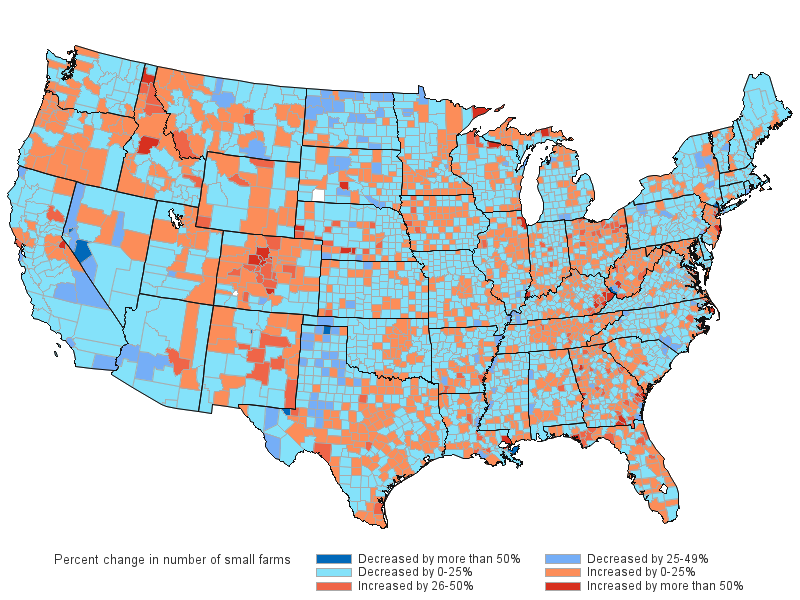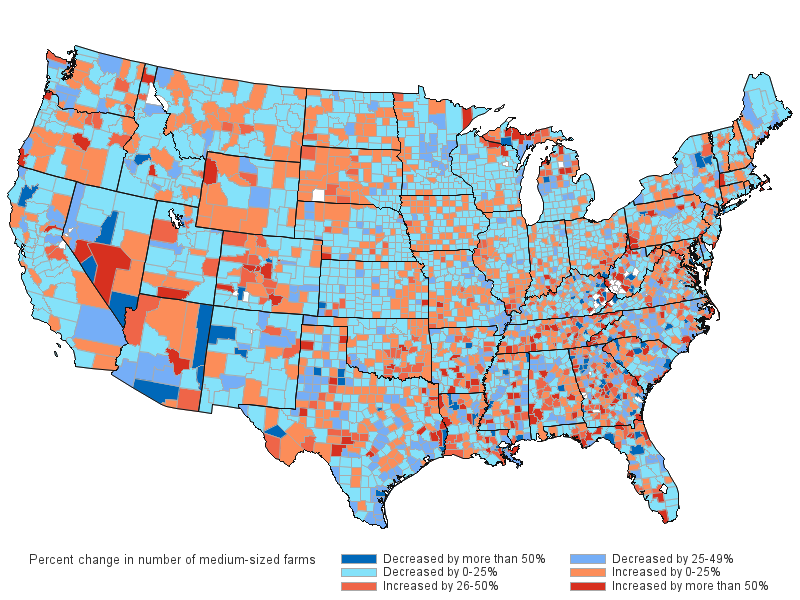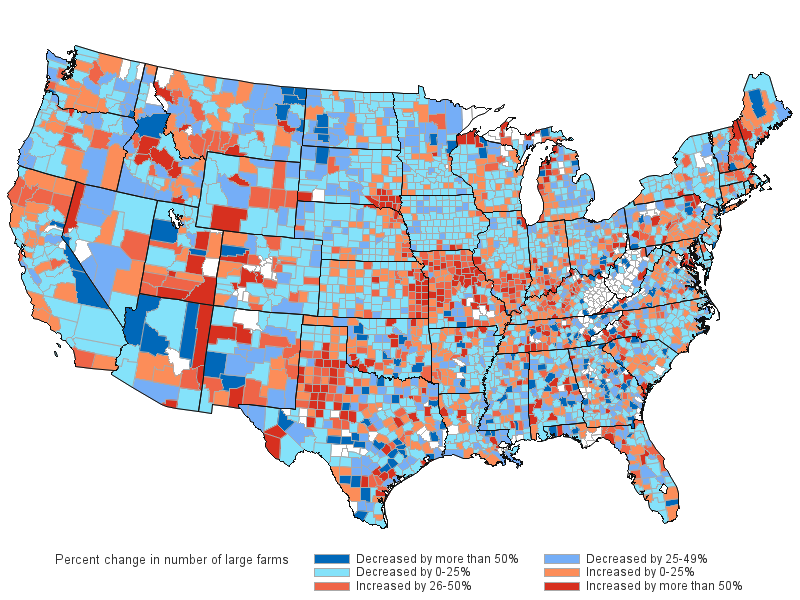After over a year in waiting, results of the 2017 Census of Agriculture were finally released by the USDA. One of the biggest and most consistent stories that followed was that the number of large and small farms increased, but the number of mid-sized farms continued to trend downward. The big caveat with these numbers, however, is that they represent the landscape across the entire United States. And if you’re in any way familiar with agricultural production in the United States, you know that the overall U.S. story might not be very characteristic of what you’re seeing in your area.
Changes in the number of operations by size provides a great example of the differences that exist across the United States. Instead of looking at total U.S. statistics, I decided to map changes in the number of operations by county. Specifically, I calculated and mapped the percent change in operation numbers by three categories—smaller farms (less than $50,000 in farm sales), medium-size farms ($50,000–$500,000 in farm sales), and large farms (over $500,000 in farm sales).

Notes: Small farms are defined as those with less than $50,000 in farm sales

Notes: Medium-size farms are defined as those with $50,000–$500,000 in farm sales

Notes: Large farms are defined as those with more than $500,000 in farm sales
The first figure (small farms) shows that across the majority of the country, there were relatively moderate (0–25%) reductions in the number of small farms. However, growth in the number of small farms primarily occurred in the Ohio Valley and Appalachian Mountains, upper Midwest, and South and Southeast regions. The greatest growth in the number of small farms occurred in the Mountain West and Pacific Northwest regions.
Medium-sized farms also experienced heterogeneous changes across the United States. Moreover, areas experienced more extremes; that is, either larger decreases in the number of medium-sized farms or larger increases of farms of that size. The data also show some suggestive evidence that in areas where medium-sized farms exited the industry, the land went into both larger and smaller operations, rather simply being bought up by larger farms.
The third figure, showing changes in the number of large farms, shows that some areas—such as the Midwest, west Texas, Utah, northern California, and parts of Montana, Idaho, and Wyoming—experienced the biggest increases in the number of large farms. Other areas, including the northern Great Plains, parts of Nevada, California, and New Mexico, as well as many counties in the South and Southeast, experienced large decreases in large farms.
So, while the overall U.S. statistics show that previous trends of more larger and smaller farms and fewer medium-sized farms continue, the story becomes much more different when zooming into specific communities.
(Photo by Wisconsin Department of Natural Resources is licensed under CC BY 4.0)

